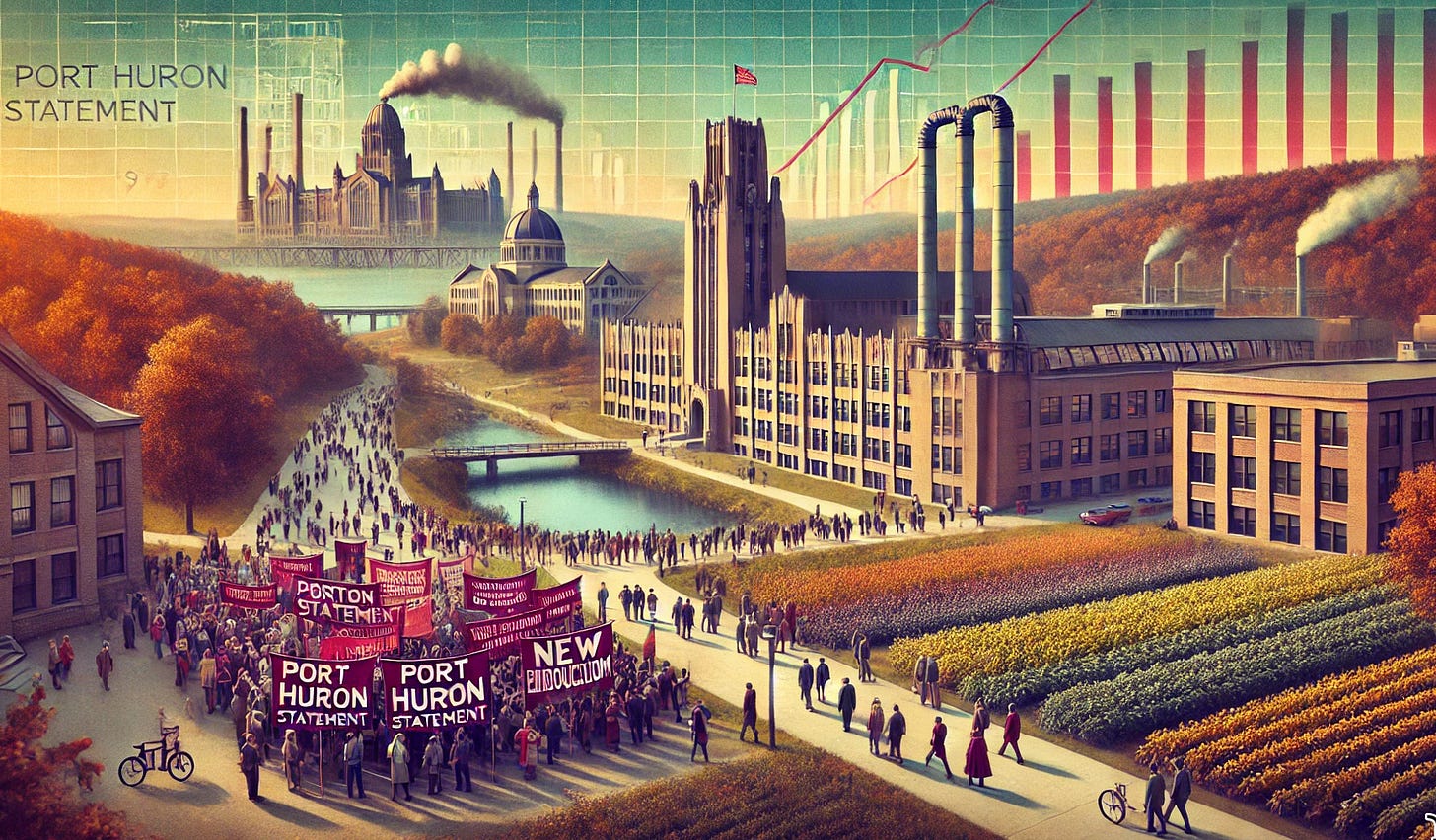DRAFT: What Might We Learn About the Rise of Neoliberalism from the "Port Huron Statement" Considered as a Historical Document?
Something that might or might not feed into my American Economic History course, Econ 113, here at Berkeley in the spring semester.
A 1962 Student Manifesto as a litmus indicator of the forces that would subsequently transform the American political-economic order. Something that might or might not feed into my American Economic History course, Econ 113, here at Berkeley in the spring semester.
My view is that while the Port Huron Statement of 1962 aimed to revolutionize America with participatory democracy and social justice, the major effect of it and its ilk was to fuel the rise of neöliberalism. What happened? And how does it and its influence help shape our understanding of American history in the country’s passage from Applied-Science to Mass-Production to Global Value-Chain Society?
Jón Steinsson twisted my arm to get me to agree to teach Econ 113: American Economic History in the spring. Since I teach at Berkeley, I am thinking of spending a class on the Port Huron Statement from 1962—what it was and what it meant in the context of the heyday of the mode of production that was Mass-Production Society and the associated political constellation that was the social-democratic New Deal Order.
What would such a class consist of?
The founders of Students for a Democratic Society back in 1962 that they had an opening to create a social movement, a university-based grassroots force for societal transformation, a movement of non-violence, participatory democracy, and non-hierarchical power dynamics grounded in love, creativity, and reason, as the created a "New Left" that would make complex issues relatable and empower individual action.
Yes, I know. I know. But look a little deeper, please…
1962 was 62 years ago. 62 years before that was 1900. Back in 1900 the flashpoints in American politics were issues like imperialism, American nationalism, monetary policy, and wealth distribution with very sharp divisions between William McKinley’s Republicans and William Jennings Bryan’s Democrats. These issues and divisions were characteristic of Applied-Science Society, in which beliefs that humanity was becoming divided between workers on the one hand and either brutal bourgeois exploiters or talented and worthy Captains of Industry on the other were ebbing away and being replaced by a much more complicated picture.
By 1962 we had moved on from Applied-Science Society to Mass-Production society and the associated the social-democratic New Deal Order, in which people’s fears were somewhat assuaged. Even though it was still clear that the only rights the market economy recognized and vindicated were property rights, this was countered by the existence of Big Business, Big Labor, and Big Government, and the hope that at least one of those would have your back.
In this context the Port Huron Statement called for a push for civil rights and Black liberation, an anti-nuclear weapons peace movement, throwing the Dixiecrats out of the Democratic Party, the transformation of the American labor movement into a labor party—even though labor parties were never built anywhere that they had not already gained critical mass in the Steampower-Society age of 1870 or so that preceded Applied-Science Society of 1900 or so—dealing with society’s opaqueness via organizing a New Left that would make the personal political, and using universities as “commanding heights” from which to start intellectual-societal transformation.
I see the net effect of all the movements and currents of thought for which the Port Huron Statement serves as a convenient marker as accelerating the fall of the New Deal Order and the coming of Neöliberalism. First, running against “the mess at Berkeley” has been a reliäble vote-winner in America since 1962. Second, and more interesting, there was powerful destructive interference between the New Left’s critique of bureaucratic structures and exaltation of individual liberation on the one hand and the willingness of liberals to defend the institutions of the New Deal Order on the other.
Below the fold, at much greater length:
Keep reading with a 7-day free trial
Subscribe to DeLong's Grasping Reality: Economy in the 2000s & Before to keep reading this post and get 7 days of free access to the full post archives.



